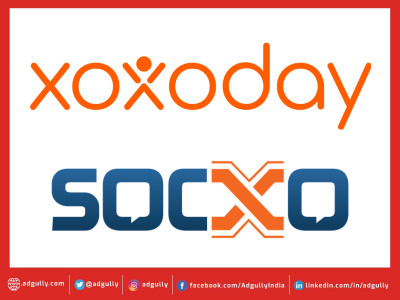The power of employee advocacy and customer trust
By Ajit Narayan, CMO, Socxo
To start with, in a data driven world and marketing folks looking at data to validate their ideas and strategies, here are some very relevant and powerful data points you might want to consider, and these are just the top five:
Employee Advocacy is word of mouth strategy: 84% of consumers value recommendations from friends and family above all forms of advertising – and additionally, 77% of consumers are likely to make a purchase after hearing about it from someone they trust. (Source: Nielsen)
Conversions and pipelines deliver better results, especially in B2B: Leads developed through employee advocacy convert 7x more frequently than other leads (Source: Edelman Trust Barometer)
Organic Engagement is powered-up: Content shared by employees receives 8X more engagement than content shared by brand channels (Source: Social Media Today)
It is used by firms on a high growth path: Nearly 31% of high-growth firms have a formal employee advocacy program, more than double the average of all other firms. Almost 86% of advocates in a formal program said that their involvement in social media had a positive impact on their career (Source: Hinge Research Institute and Social Media Today)
It powers-up culture and employee retention: Companies with a successful employee advocacy program are 58% more likely to attract, and 20% more likely to retain, top talent (LinkedIn)
While the numbers are a no-brainer to the point that any brand wanting to take its organic social media marketing to the next level should be building and using an Employee Advocacy Program, there are important points to consider before embarking on doing it.
Let’s just delve on a singular point which impacts everything else you think or do.
It starts with defining what exactly do you want to achieve? While you would definitely want to expand the reach of your content marketing, who are you targeting as participants on one side, and as the end viewer of the content on the other?
Answering this for your brand and company is the path to a flourishing and active Employee Advocacy Program a.k.a the power of one.
This leads you to think across departmental silos. Marketing, HR, Sales while you embark on the project. And will help the team come together on common ground. Which is what every business seeks. This coming together helps business’ set seeds for approaching common business problems in a comprehensive manner. More 360 degrees than just advertising and marketing communications and foundational.
Now the questions that might triggered by this idea, is what each department seeks and how they can be addressed through a common program. While the end goals and participants in the program might differ, each department is seeking ways to communicate and reach their audiences. This is a singular idea that one needs to understand and make good. So, while HR seeks to connect with employees (current and future) for not just the pay-check or pay scales, but to truly generate positive experiences for employees, they are running employee experience programmes and trying to get employees engaged not just with the organisational culture but also try and promote. It is the second part, the promote, where they look for marketing help. But what if, marketing and HR got together on both?
The result? An employee engagement and advocacy program that is also “on brand”. While doing this, HR also seeks to reward, engage, and groom future leaders in the organisation. Result? Look at the retention data point (Number 5 above) and it tells you what an actual result is.
Now let’s look at Sales and why should they bother at all? They are bound by targets and conversions and not soft metrics of reach, engagements that marketing seeks. One look at the pandemic turns and what’s happened in the business world is enough to point to the fact that, cold calling and in person contact has been dealt with a big blow. Prospecting has given way to a new way of selling. Called Social Selling. Which while not really, the final deal making, the prep and warm-up. The data points two and four, are proof of the pudding. Albeit this is more relevant from a B2B context.
I would encourage you to also look at it from a channel or a distribution network oriented B2C perspective, where the employees of the dealers and their networks are prospects in the pipeline and footfalls. Now which distribution network sales guy does not want to motivate their channel?
Finally, we come to marketing, where reach, engagement and leads are perhaps the most talked about across the marketing fraternity. Here comes the multiplier effect. And most folks in marketing are by now more than acutely aware of the non-existence of organic reach. The folks who are spending their money, time, and effort in content marketing. Trucks loads of content being shared, but unless media money is spent, it is just content. Here’s where the first data point and many more come in. The compounding effect of Employee Advocacy.
And like most things discussed around compounding in finance, longevity and strategic buy-in are the key drivers. Same is the case with and Advocacy Program. If you are in the game, strategically over a period of time, the results will surprise you.












Share
Facebook
YouTube
Tweet
Twitter
LinkedIn